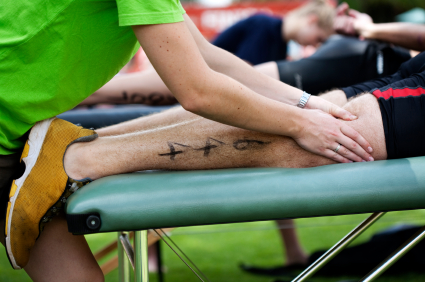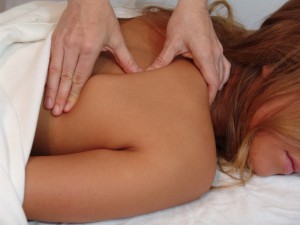What is Juvenile Rheumatoid Arthritis
Juvenile idiopathic arthritis is also known as Juvenile Arthritis, Juvenile Rheumatoid Arthritis, Juvenile Polyarthritis, JRA, and Still’s disease.
In general JIA is a term used to describe arthritis in children. It may be either long term or short term with long term being the most common end result.
The two most common symptoms of this condition are joint swelling and joint pain.
Unfortunately the cause of this condition is unknown and is thought to be an autoimmune illness. This indicates that the body’s own immune system lacks the ability to recognize its own healthy tissue and destroys it.
Juvenile Rheumatoid Arthritis symptoms may start as early as young as six months old and is usually diagnosed before the age of 16.
Types of JRA
There are several types of JRA some more severe than others.
Systemic JRA: This type of Juvenile arthritis involves joint swelling, pain fevers or rash. It is the least common
Polyarticular JRA
: This form of JRA involves many joints. It may in the end turn into rheumatoid arthritis. It involves at least five or more large and small joints of the legs and arms, as well as the jaw and neck.
Pauciarticular JRA: This form of JRA involves four or less joints. Generally the wrists and /or knee are involved. It is also possible that this condition may affect the eyes.
Symptoms of Juvenile Arthritis
Here is a list of general symptoms that may present with JRA:
• joint stiffness and pain
• limited range of motion
• warm swollen or red joints
• restriction of movement of an effected limb or may walk with limp
Entire Body JRA Symptoms:
• fever –usually high every day
• rash that comes and goes with the fever and presents on the trunk and extremities
• pale skin
• swollen lymph nodes
• look sick
Juvenile Rheumatoid Arthritis may also cause eye problems known as uveitis, iridocycitis or iritis. There may not be any symptoms or the person may have:
• red eyes
• eye pain that may get worse when looking at light
• vision changes
Tests and Signs for JRA
Blood Tests:
• rheumatoid factor
• Erythrocyte sedimentation rate (ESR)
• ANA
• Complete blood count
• HLA antigens for HLA B27
Any or all these blood tests may be normal in patients with JRA.
Signs:
• Swollen liver
• Swollen spleen
• swollen lymph nodes
The medical professional may place a small needle into a swollen joint to remove fluid. This can help to find the cause of the arthritis and help relieve pain as well.
Sometimes, the health care provider will inject steroids into the joint to help with swelling.
This may be in the form of a cortisol injection. As much as there is benefits to this injection there may side effects ass well too.
***Repeated cortisone or steroid injection can lead to weakness and tearing of the tissue surrounding the joint. This leads to joint instability***
There some other tests that may be done to help get a diagnosis for the problem.
• X-ray of the involved joint
• Bone scan
• X-ray of the chest
• ECG
• Eye exam by an ophthalmologist on a regular basis
Treatment for JRA
Medication:
If a small number of joints are involved NSAIDS (non-steroidal anti-inflammatory drugs) such as ibuprofen or naproxen may be enough to control symptoms.
Corticosteroids, which are more powerful, may be prescribed for severe flare ups to help control symptoms.
Unfortunately, children who have arthritis in many joints or who have come down with fever, rash and swollen glands may need other medications. These medications are called DMARDs (disease – modifying anti-rheumatic drugs). They can decrease or prevent swelling in the joints or body
This would include
Methotrexate
. This is a powerful drug and you need to be aware of its possible risks:
• Gastrointestinal ulceration (tearing of the lining of the digestive tract)
• Bleeding mouth
• Throat ulceration (tearing of the lining of the throat)
• Severe bone marrow depression (weakening of the bone marrow)
• Possible damage to the lungs, liver or kidneys
• Loss of hair
This drug is used to fight both childhood and adult cancers.
This drug is given to control symptoms such as pain, swollen joints, early morning stiffness and decrease range of motion.
It is important for your child to avoid this drug if there is an allergic reaction, have had a recent exposure to either chicken pox or shingles.
If your child exhibits any of the following symptoms report this to your family physician:
• Vomiting
• Severe reaction to sun
• Intestinal cramping
• Diarrhea (may be bloody)
• Painful urination
• Eye irritation
• Bloody urine
• Increased fatigue
• Increased weakness
• Abnormal bleeding
• Abnormal bruising
*** It is vital to monitor your child on a daily basis for any of these side effects***
The next drug used might be
Prednisone.
The possible risks with this drug are:
• Altered mood and personality
• Cataracts, glaucoma
• Hypertension (high blood pressure)
• Abnormal heartbeats
• Osteoporosis
• Increased susceptibility to infection from others
The purpose of this drug is to relieve swelling and the inflammatory response.
Some side effects may include:
• Increased appetite
• Weight gain
• Retention of water and salt leading to high blood pressure
• Growth changes
• Depression
• Poor wound healing
• Easy bruising
Again with any significant adverse reaction see your family physician or go to emergency at the hospital closest to you.
Other drugs that may be taken are etanercept, infliximab.
Be Proactive with Juvenile Arthritis
Your child needs to be active. They need to be moving as much as possible and they need to keep their muscle strong.
There are several activities they can do keep fit and moving.
Here are some things they can do:
• walk -20 -30 minutes a day
• bicycle -20- 30 minutes a day
• track and field –sprints at school
***Precaution –if there is any pain then modify the activity.***
Less is better than more. Your child warm up before participating in any activities. This could be a simple as starting slow and getting faster on a bike.
Your child may do simple range of motion exercises at home for both the upper and lower body.
For the lower body your child may lie on their back with hip and knees bent so that the foot is flat on the floor.
Then all they do straighten and bend the leg. They can do ten on one side then ten on the other side. They may work up to 3 sets of ten repetitions.
For the upper body they can stand and perform forward and backward arm circles.
Again they can work up to three sets of ten.
It has been my experience that the hip and back tend to be the sorest joints.
Massage Therapy Treatment for Juvenile Idiopathic Arthritis
Generally the back and hip tend to be the areas of most pain. Muscles tend to have increased muscle and are “tight”
Depending on your clients pain tolerance and comfort level myofascial release either direct or indirect may prove to be very beneficial as treatment.
You can take a towel and rinse it under very warm water (avoid hot to avoid burns) and wrap it around the affected area. The feeling of heat usually last from 5 to 8 minutes. Be sure to check every couple of minutes to see how they are feeling.
As best you can stay upbeat and positive. It is possible that your child might develop sadness and anger. Do not hesitate to look for counseling if this becomes more than you can handle.
Many times this sadness and anger results from the pain and inability to perform certain tasks.
Have your child focus on their accomplishments.
Nutrition for Children with JRA
Sound nutrition for your child may help minimize some of the pain and inflammation.
In general you want to stay away from fatty foods that cause inflammation. Good healthy eating will minimize some of fatigue, pain and swelling that your child is suffering from. It is not a be all end all but it does help to eat well.
Supplements may also help with the inflammation. Things such as fish oils and vitamin C. That being said I would consult with a nutritionist or your child’s rheumatoid specialist.
Complications of JRA
As with many different conditions there may be complication with JRA. This would include:
• Slow rate of growth
• Uneven growth of an arm or leg
• Loss of vision or decreased vision
• Anemia
• Swelling around the heart
• Chronic pain
Any time your child gets new symptoms or current symptoms get worse follow up immediately with your family physician.
The Future
If your child blood tests come back positive for rheumatoid factor they more likely to develop chronic pain, disability, and poor school attendance.
Chances are that your child will develop
rheumatoid arthritis
as an adult if they test positive for rheumatoid factor.
Depending on the severity of the JRA some children may need surgery and / or joint replacement.
Many children with JRA go into remission with very little loss of function and joint damage. This usually occurs if the child has had only a few number joints affected.
Summary of JRA
The purpose of this mini report was to give some firsthand information and introduce to Juvenile Rheumatoid Arthritis.
You have been given both the worst case scenario and the best case scenario so that you are prepared to deal with this issue with your child.
As practicing massage therapist working with JRA I find that the mindset of the child and the support of the parents have a major influence on the child.
The areas I tend to work on most are the back and legs.
You may be interested in picking up our complementary book “Your Healing Hands” to help you give a massage to your child.
/your-healing-hands


